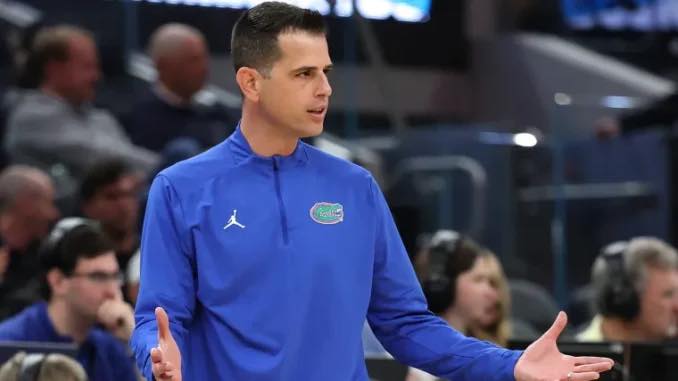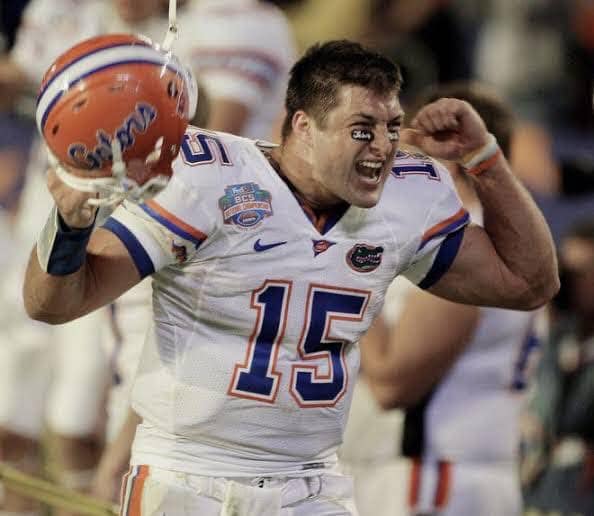Remember When Carolina Went 15-1? Why the 2015 Panthers Just Earned Recognition Among the NFL’s Greatest Teams of the Century — And Why That Season Still Matters
The 2015 Carolina Panthers did more than win football games; they captured a mood, ignited a region, and briefly rewrote what modern NFL dominance looked like when swagger, creativity, and culture came together at full speed. Now, with the passage of time giving us a clearer view of that remarkable run, a growing number of retrospectives and evaluators have begun slotting that Panthers squad among the best NFL teams of the 21st century, even though the season ended a step short of a Lombardi Trophy. That recognition isn’t nostalgia talking. It’s a reconsideration of what made that group historically special: the record, the style, the buy-in, the sheer force of personality radiating from every “Keep Pounding” Sunday. And for Carolina fans—plus anyone who loves the idea that chemistry can amplify talent—the 2015 Panthers remain a master class in collective momentum.
Start with the simplest evidence: wins. The Panthers went 15-1 in the regular season, a staggering achievement in an era engineered for parity. Dominant records happen, but they rarely come from teams many outsiders didn’t rate as elite before the year began. Carolina entered 2015 with questions at wide receiver, with national skepticism about whether its offense could stretch the field consistently, and with the usual doubts about whether an emotional, do-it-all quarterback could carry a roster that didn’t feature a glamor cast of Pro Bowl pass catchers. All the Panthers did in response was pile up victories with ruthless consistency, burying teams early, finishing late, and playing with a joyful looseness that made every dab, every sideline grin, every defensive celebration feel like part of a movement.
At the center of it all stood Cam Newton, who didn’t just win league MVP—he became the gravitational core of the sport for four unforgettable months. Newton accounted for touchdowns in bunches, punished defenses as a short-yardage battering ram, launched deep strikes when opportunities appeared, and weaponized play-action off Carolina’s power run looks like few quarterbacks in memory. The numbers were big, but the moments were bigger. Fourth-down conversions. Red-zone keepers nobody could stop even when they knew they were coming. Spontaneous connections with young fans in the front row. Newton made the Panthers must-watch television, but he also gave the locker room a performance standard: play loose, play physical, play for each other. That ethos spread.
Of course, the offense was more than Newton freelancing. Coordinator Mike Shula built a system that fit what the roster did best. Heavy formations. Condensed splits. Play-action off downhill runs. Multi-use skill players who could motion, crack block, leak, and stress assignments. Jonathan Stewart provided a strong interior rushing backbone. Fullback Mike Tolbert added short-yardage muscle and pass-protection smarts. Tight end Greg Olsen was the chain-moving heartbeat of the passing game, trusted when leverage got tight and coverages squeezed. Ted Ginn Jr. stretched defenses vertically even when the ball didn’t find him; safeties had to honor that speed, opening intermediate windows. Role receivers—often overlooked nationally—executed with discipline, blocked downfield, and gave Newton defined reads. It wasn’t a fantasy-football lineup; it was an orchestra tuned to its conductor.
Then there was the defense, a relentless, swarming force that combined discipline with big-play instincts. Middle linebacker Luke Kuechly diagnosed plays faster than broadcast crews could circle tendencies on telestrators. Thomas Davis played with a warrior’s edge, stacking blocks, scraping to the sideline, blitzing when called, and setting an emotional tone matched only by his resilience. On the line, Kawann Short wrecked pockets from the interior, collapsing launch points and forcing hurried throws that opportunistic defensive backs could attack. Josh Norman delivered his breakout season at corner, mixing physicality and length with a flair for high-stakes pass breakups that turned him into one of the league’s most talked-about defenders. Add in a scheme that trusted its linebackers to read-and-react while rotating coverage shells behind disguised pressures, and opponents rarely found clean answers. Carolina didn’t merely slow teams; it took the ball away and flipped field position into points.
“Keep Pounding” wasn’t just a slogan stitched on gear—it was a visible through-line from franchise identity to on-field resilience. The phrase, rooted in the memory of Panthers legend Sam Mills, carried emotional weight in the locker room, the community, and the stadium. That 2015 roster lived it. Games that might have swung the other way for less connected teams instead became proof of concept moments. A deficit? Keep pounding. Field-position grind? Keep pounding. Short week? Keep pounding. That cultural glue is a hard metric to quantify, which is partly why it takes time—and distance—for evaluators to appreciate what they saw. When panels now revisit the greatest teams of the century, they’re not just looking at raw yardage rankings; they’re asking which groups defined a season, shaped conversation, and forced adjustments league-wide. The 2015 Panthers check those boxes.
Their playoff run further solidified the case. Carolina opened the postseason by roaring out to a massive first-half lead over the Seattle Seahawks, a battle-tested opponent fresh off consecutive Super Bowl trips. The Panthers’ ability to ambush a heavyweight like that said everything about their preparation and explosiveness. In the NFC Championship Game, they overwhelmed the Arizona Cardinals, who themselves were widely viewed as one of the most complete rosters in football that year. Carolina forced turnovers, capitalized on short fields, and leaned into the home-crowd energy that had become a tactical advantage. By the time the confetti fell at Bank of America Stadium, the Panthers looked like a team of destiny barreling toward the sport’s biggest stage.
Super Bowl 50 did not deliver the ending Panthers fans wanted. The Denver Broncos’ ferocious pass rush led by Von Miller and DeMarcus Ware disrupted protections from the opening series, and Carolina never fully found rhythm. A handful of critical plays—strips, field-position swings, missed opportunities—stacked up. Newton, so dynamic all year, fought a defense built to squeeze space and punish hesitation. Critics seized on the loss, as they always do when a breakout team falls short at the finish line, and for a while the memory of 2015 got tangled in the disappointment of coming up one win shy of immortality. But reevaluation allows us to separate result from résumé. Many of the most celebrated teams in NFL history didn’t win the title: the 2007 Patriots, the 2013 Broncos’ offense, the 2015 Cardinals before the title game, even earlier-decade juggernauts that ran into bad matchup luck. The question for “best of the century” discussions isn’t limited to “did you hoist the trophy?” but “how thoroughly did you dominate your era across 17-plus games?” By that broader standard, the 2015 Panthers belong in the conversation.
Another reason analysts keep circling back to that team is how uniquely Carolina its success felt. Some great teams are plug-and-play talent stacks: sign stars, draft blue-chips, roll the ball out. The Panthers were something else—a blend of homegrown leaders, calculated acquisitions, creative coaching adaptation, and a star quarterback whose style drew equal parts admiration and debate. Their celebrations weren’t marketing—they were spontaneous punctuation to real dominance. Kids across the country dabbing in youth leagues and school hallways weren’t imitating a brand campaign; they were copying Cam. That cultural spillover matters when we talk about which teams defined an NFL moment in time.
From a team-building perspective, the 2015 Panthers also provide a fascinating case study for modern front offices. They won big without a prototypical three-deep arsenal of star wideouts. They relied heavily on tight end usage, quarterback run threat, and formation multiplicity to create mismatches. They invested in linebacker intelligence and interior defensive disruption rather than chasing only edge-star power. They leaned into their identity instead of apologizing for it. In a copycat league, opponents spent much of 2015 and 2016 trying to decide how much quarterback run game they could safely deploy, how to defend heavy play-action when the QB was also the short-yardage back, and how to match personnel when the offense refused to telegraph intent with traditional spreads. That strategic ripple effect is another marker of greatness.
Recognition in “best of the century” discussions inevitably invites comparison. Were the 2015 Panthers better than the peak Patriots, Chiefs, Seahawks, or early-2000s Bucs defense? That depends on criteria. Sustained dynasties hold the crown for longevity; single-season rockets like the 2015 Panthers are judged on peak height. When viewed through that lens—peak performance, record, point differential waves, MVP-level quarterback play, elite turnover creation, cultural imprint—their résumé stacks up more impressively than some remember. A 15-1 record in the salary-cap era is a neon billboard screaming historical relevance. That it came from a roster many pegged as talent-thin at premium positions only amplifies the achievement.
Time has also added emotional depth. Players have moved on, careers have shifted, and the league has evolved toward even more motion, spacing, and hybrid usage. Looking back, the 2015 Panthers feel both like a culmination of power-football DNA and a preview of positionless, QB-centric design to come. Newton’s deployed skill set—designed runs married to vertical shots, tempo control with heavy personnel—foreshadowed elements you now see sprinkled across multiple franchises. The defensive emphasis on range at linebacker and interior havoc has likewise been validated by analytics-driven roster philosophy in the years since. Recognition today isn’t a token nostalgia award; it’s acknowledgment that the 2015 Panthers were ahead of certain curves.
For Panthers fans, seeing that team honored among the best this century offers something more personal—a reminder that the franchise can reach rare air, that a unified locker room fueled by belief and identity can punch with the league’s giants, and that Bank of America Stadium can vibrate with national-stage energy when the product justifies it. Younger fans who came on board post-Newton are hearing veterans of fandom talk again about that electricity: the dabs, the pick-sixes, the 40-burger outbursts, the sense each week that Carolina could break a game open no matter the opponent. Recognition validates memory. Memory feeds belief. Belief fuels the next build.
And that may be the most lasting value of honoring the 2015 Carolina Panthers now. Labels like “one of the NFL’s best this century” do more than settle barstool debates; they become cultural markers a franchise can recruit with, rally around, and aspire to surpass. When the current roster gathers for camp film sessions and hears coaches reference what peak Panther football once looked like—fast, fearless, connected—they’re not looking at grainy archival footage from another era. They’re looking at a blueprint drawn less than a decade ago, crafted in the same building, under the same fan base, with the same rallying cry echoing through the tunnel. Keep pounding, indeed.



